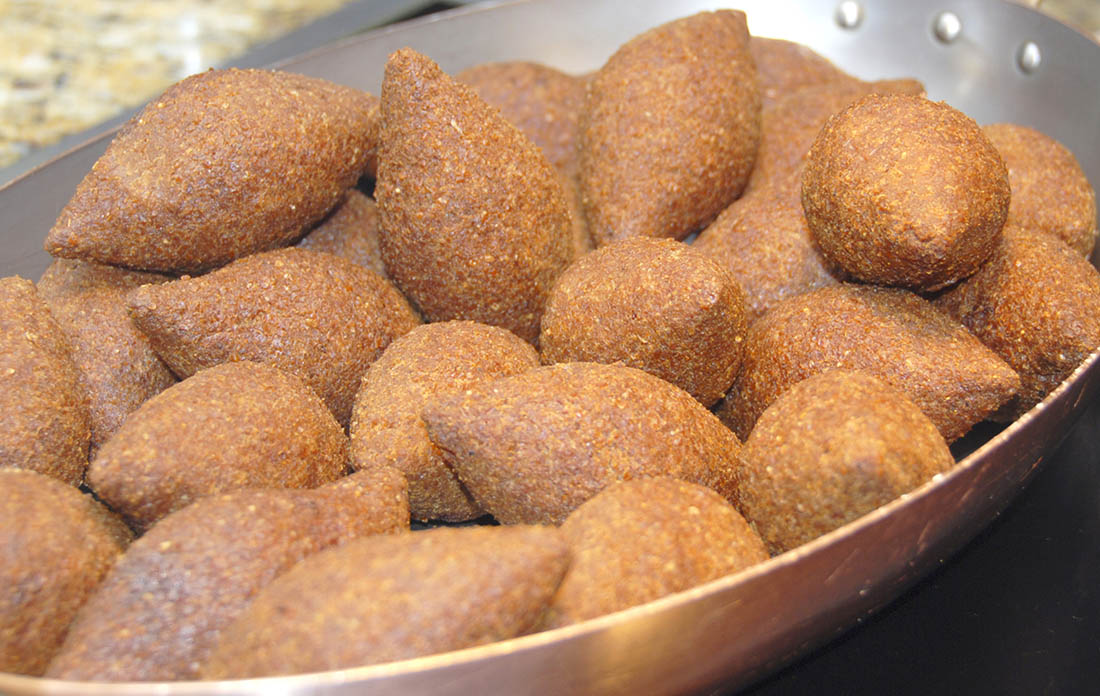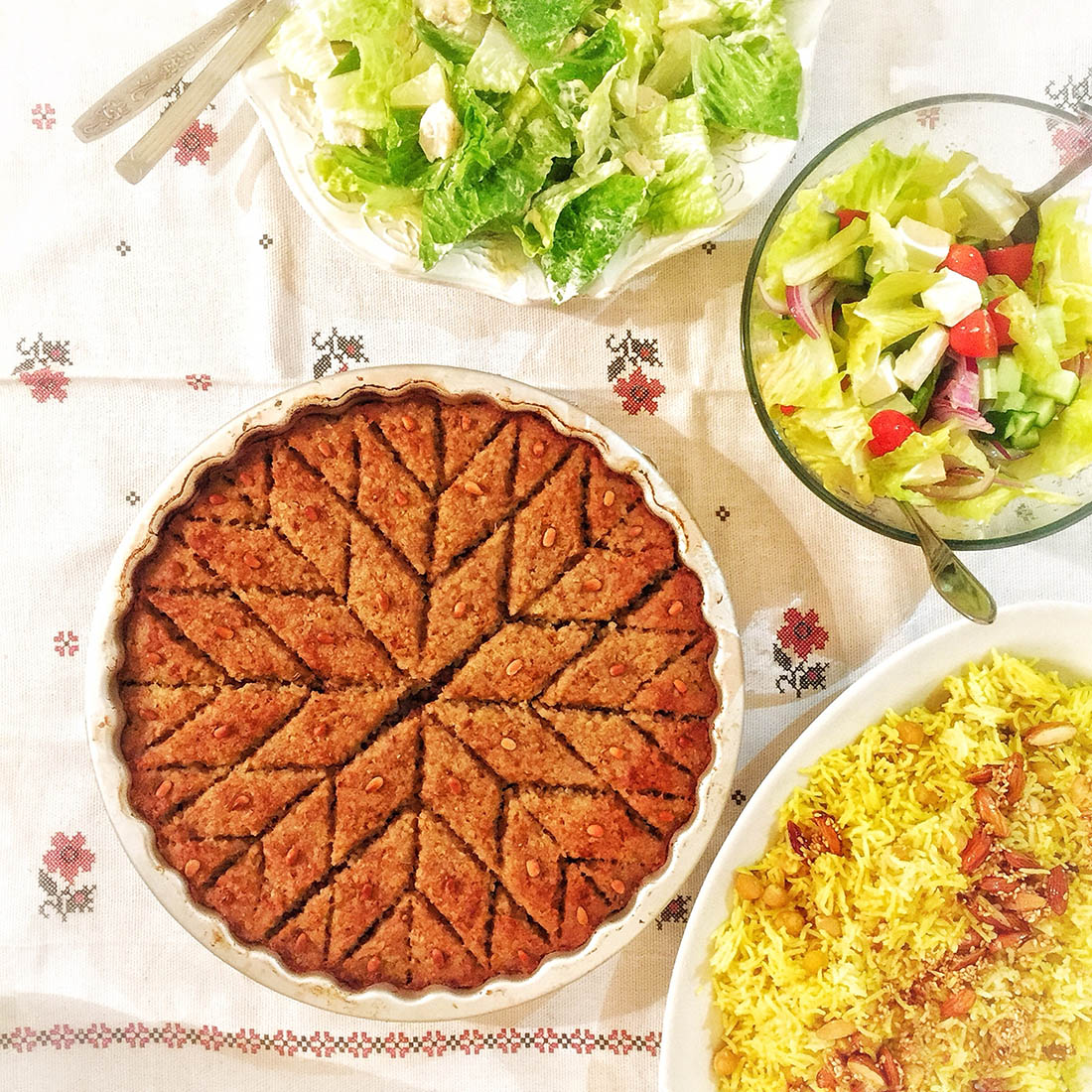Generations of Lebanese migrants have contributed to Canada’s culinary scene. With food being central to Lebanese culture, it’s only fitting that the majority of Canada’s imports from Lebanon are agri-food products. (See Lebanese Food in Canada.)
Baklava
Baklava is a dessert that consists of layers of phyllo dough, with a filling of chopped nuts and covered in simple syrup. There are different theories on the origin of baklava. Some say it is a dessert with strong religious ties that dates from before the Ottoman Empire. Baklava is notably a popular dessert served for the celebration of Eid-ul-Fitr, the largest holiday for Lebanese Muslims. Eid happens at the end of every Ramadan, the month that Muslims fast from sunrise to sunset.
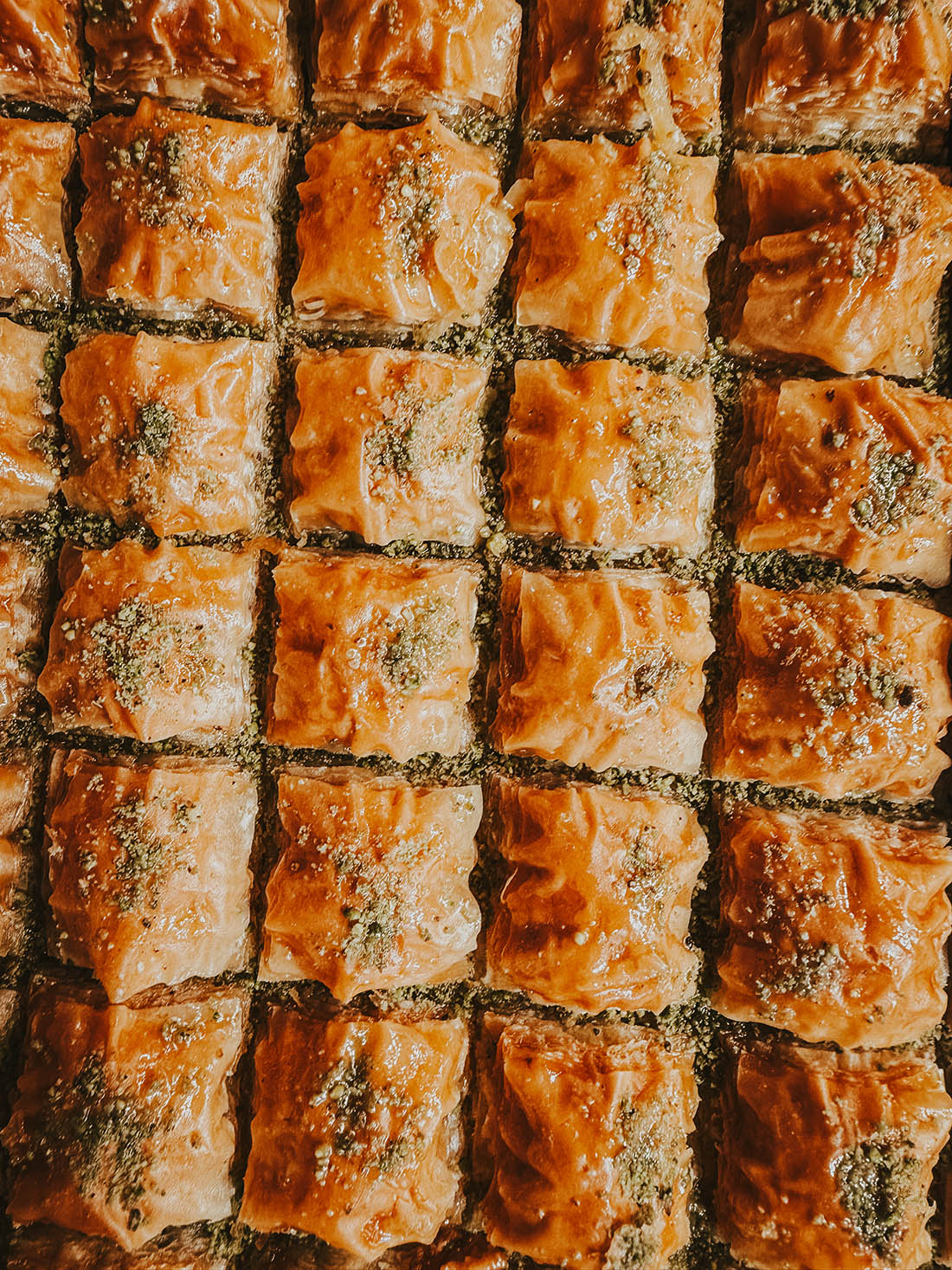
Fatayer
Fatayer translates from Arabic to “pastries” or “little pies.” (See also Arab Canadians.) Traditionally, they are filled with spinach, chopped onions and, sometimes, pine nuts. They can also have a ground meat filling. Fatayer are also popular for breaking the fast during the 30-day fasting period of Ramadan. However, they are also eaten outside Ramadan, as fatayer can be considered a snack or an appetizer dish.
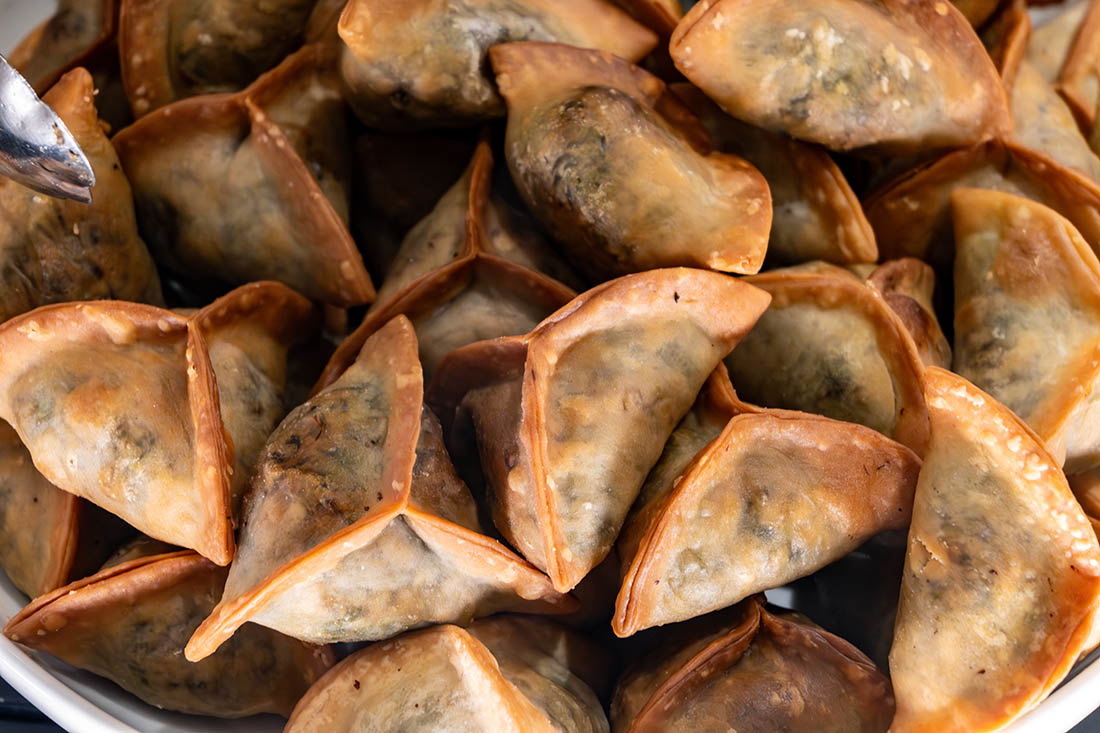
Falafel
Falafel is a vegan dish popular all over Southwest Asia, however each country makes it a little differently. Lebanese falafel is made by grinding together chickpeas, fava beans, parsley, cilantro, onion, garlic and spices, and then creating medal-like shapes to deep fry. It is usually served with fresh tomato slices, pickled turnip, parsley and tahini sauce wrapped in a piece of pita bread.
Falafel is a popular vegan and gluten-free dish to not only the Middle Eastern diaspora but to non-Arabs as well.
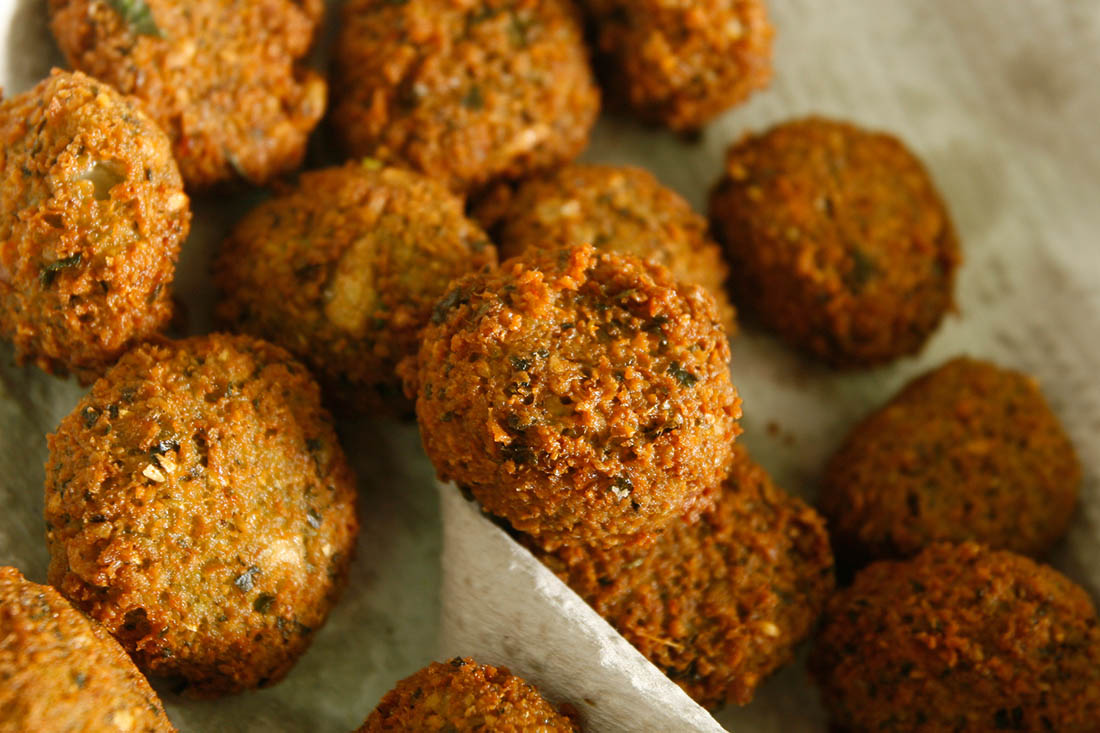
Fattoush
Fattoush is a traditional Lebanese salad dish that is known for its lemon and citrus taste. In Lebanon, fattoush is not a side dish but rather one of the mains. It is made up of chopped romaine lettuce, tomatoes, parsley, lemon juice, olive oil, green onions and sumac.
Sumac is a citrusy and tart spice from a shrub-like plant. There are edible species as well as a poisonous one. Several edible species of sumac can be found in most regions of southern Canada.
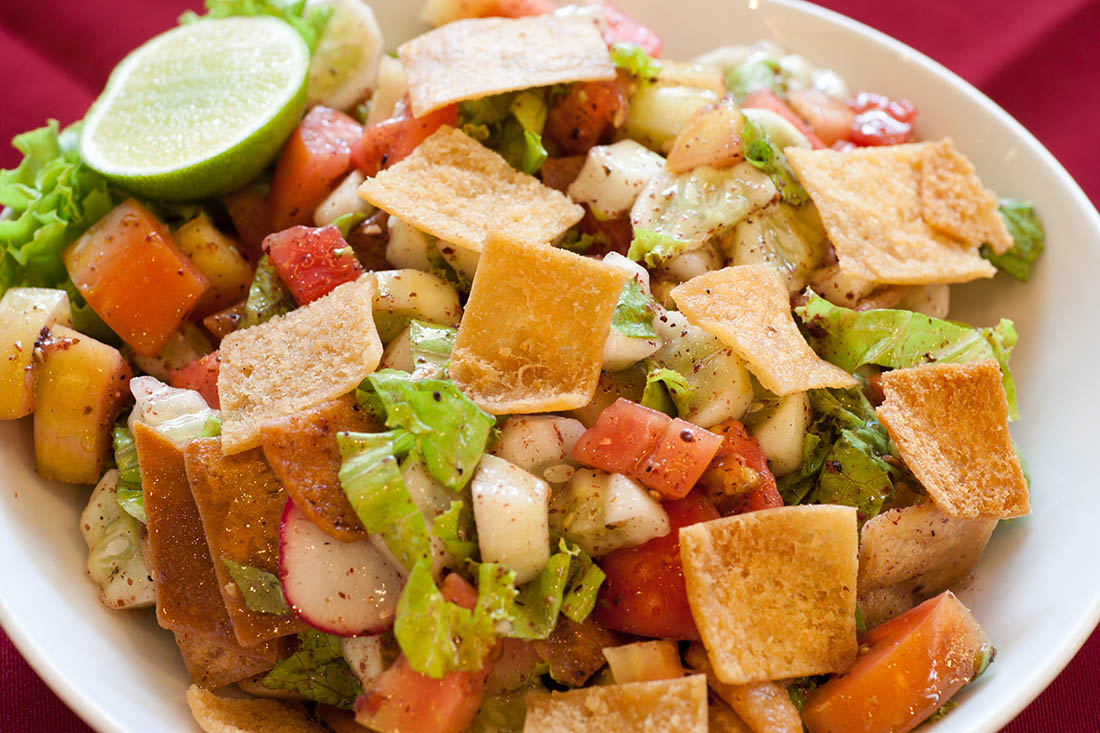
Hummus
Hummus is one of the more well-known Lebanese mezzes (a small-plate dish or a Middle Eastern version of an appetizer) in Canada. Hummus translates to “chickpeas.” It is made up of overnight-soaked chickpeas which are then ground with garlic, tahini and lemon juice. It is served with pita bread and can also be served alongside other mezzes or dips like baba ghanouj (a roasted eggplant dip) and muhammara (a roasted red pepper dip). Canadian companies like Loblaws have also experimented with including non-traditional ingredients like roasted bell peppers or garlic to put different hummus flavours on the market.
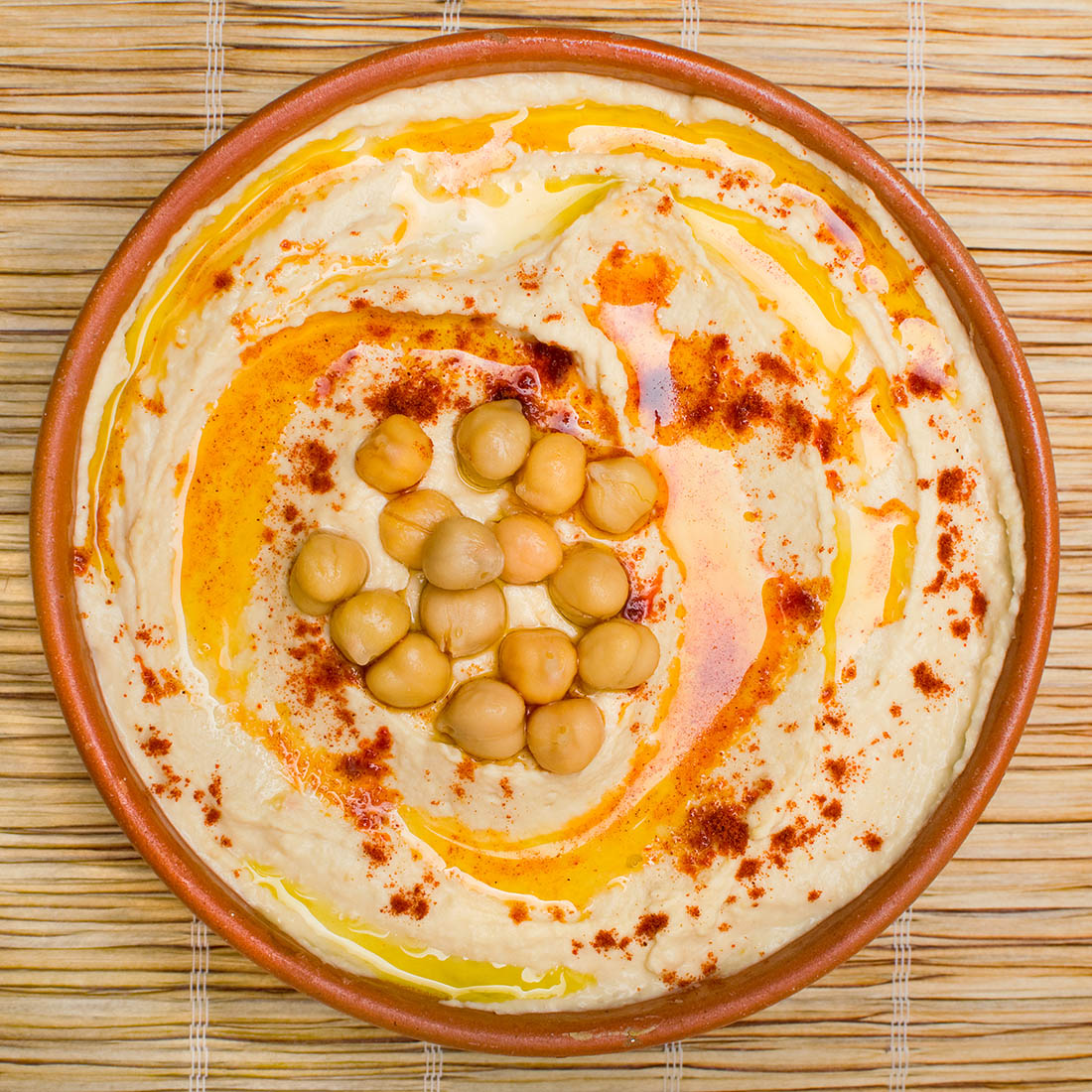
Kibbeh
An old-school Lebanese homecooked dish, Kibbeh is an oval-shaped meatball that is deep fried. It can also be baked in a circular cooking dish and marked with a diamond pattern. Kibbeh is made of ground beef, bulgur wheat and onions. Traditionally the dish also has pine nuts but due to the steep price of pine nuts in Canada, they are used more for decoration rather than in the dish itself. Kibbeh is often served with a side of Lebanese-style tzatziki sauce comprised of yogurt, mint, garlic, lemon and cucumber. Tzatziki is also known as laban wa khyar, which translates to yogurt with cucumber.
Labneh
Another staple on every Lebanese dining table is labneh, which is a thick yogurt, often served with olive oil. It can be eaten with pita bread and can be included in any meal of the day. Labneh can also be served with a generous sprinkle of zaatar ― a spice blend of thyme, sumac, toasted sesame seeds and salt. Each country in the region around Lebanon has a variation of this spice blend.
Before commercialized production and labneh became available in Canadian grocery stores, the Lebanese diaspora would find creative ways to make labneh at home. Luckily, it is simple enough to replicate; however, it requires a lengthy amount of time to prepare. Depending on the quantity being made, labneh must be drained in a cheesecloth for up to 24 hours, either in a colander or hanging from wherever you can hang a bag of cheese.
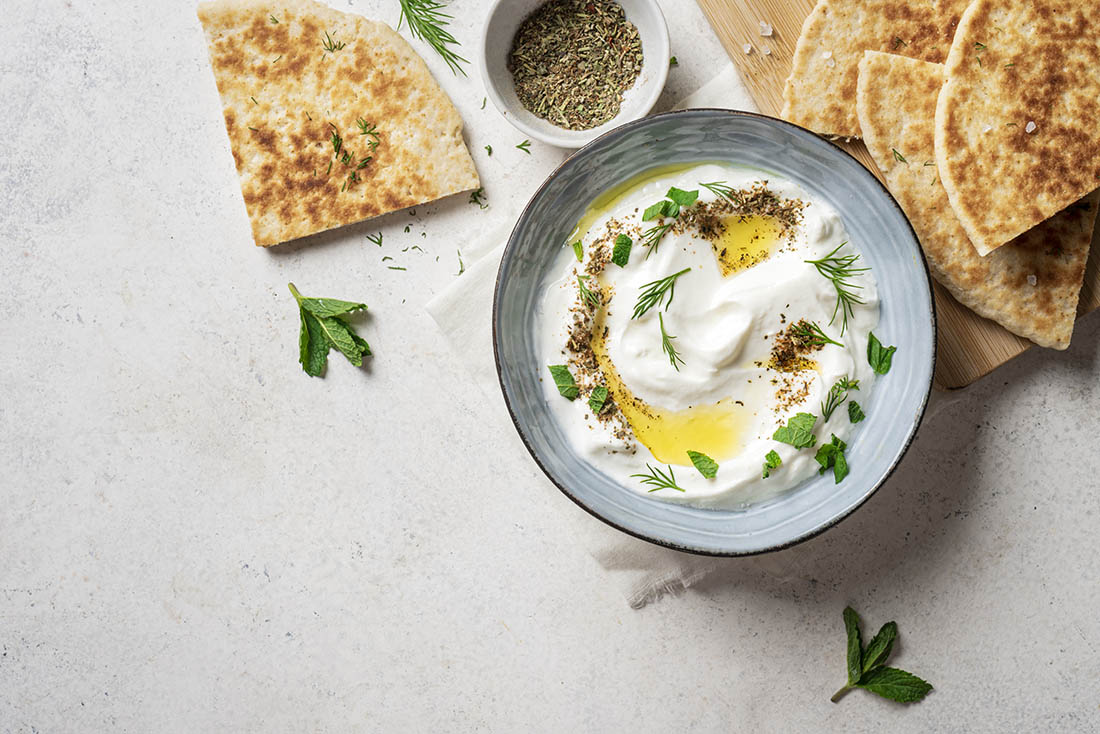
Shawarma
Shawarma is a Lebanese sandwich filled with chicken, toum (a garlic sauce), french fries and sliced Lebanese pickles. The chicken is marinated in an array of spices like cumin, coriander, paprika, garlic and lemon, but each country in Southwest Asia may have variations of this spice mix. The meat is then layered vertically on a metal spike, with heat on one side and rotated for hours to cook. To serve, the chicken is usually quickly sauteed on a griddle. In Canada, it is also often filled with hummus, lettuce, onions, tomatoes and pickles.

Shawarma can also be made of beef, or sometimes lamb. With beef, the filling can include Lebanese-style pickles, parsley, tomato and tarator sauce (tahini, lemon juice, garlic and salt).
In Lebanon, shawarma is considered a sandwich snack. In Canada, it has notably gained popularity as a late-night snack after leaving a bar or nightclub.
Tabbouleh
Similar to fattoush, tabbouleh is not just a salad; Lebanese people consider it one of the main dishes on a table. Tabbouleh is made up of chopped parsley, tomatoes, mint, bulgur wheat, lemon juice and olive oil. The Lebanese style of serving tabbouleh is with a couple of leaves of romaine lettuce sitting under the tabbouleh, acting like a boat.
Tabbouleh pairs well with Lebanese grilled meats like kafta (ground beef, parsley, onion and spices), shish tawouk (chicken kebab) and beef steak kebab.
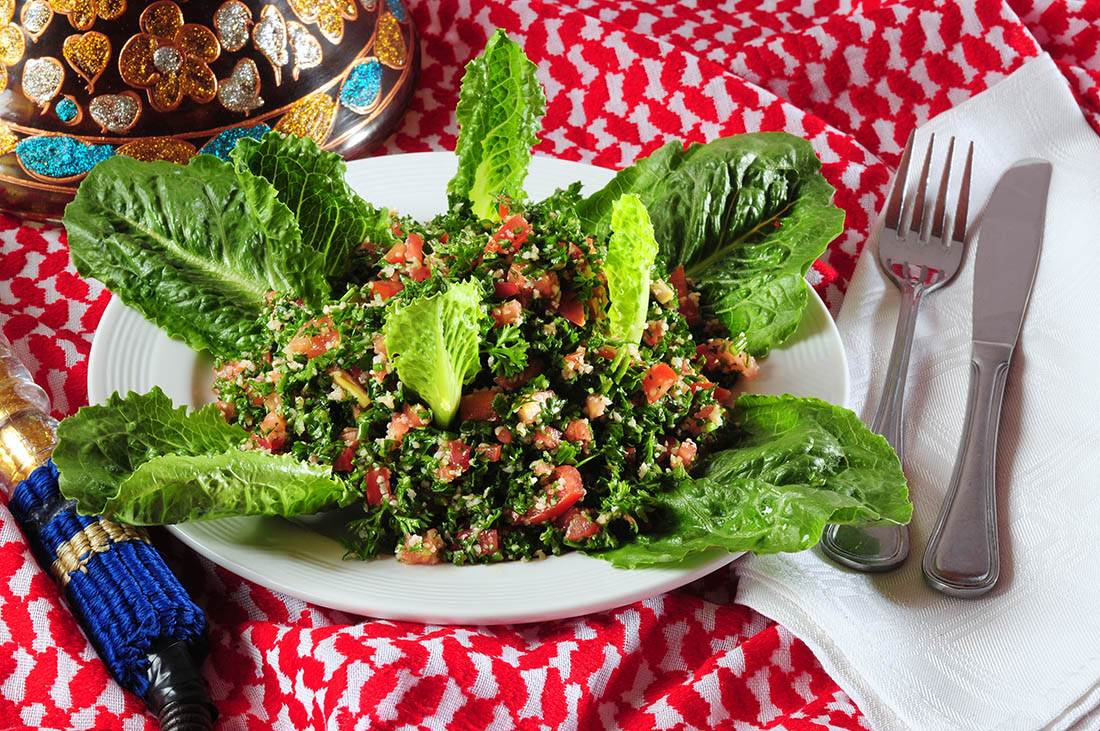
Warak Enab
Warak enab means “grape leaves” in Arabic. In Lebanese cuisine, it’s made by having grape leaves stuffed with rice and meat or rice and vegetables as well as spices like cinnamon, allspice and Arabic seven spice. It’s also known as dolma, which is also a dish associated with Greece.
It is a versatile dish that can be served warm or cold: the vegetarian version is served chilled while the meat one is served warm. The dish is cooked in a large pot. In some Lebanese households, the wrapped grape leaves are layered in a pot with tomatoes, onions, potatoes and/or lamb chops or lamb neck.
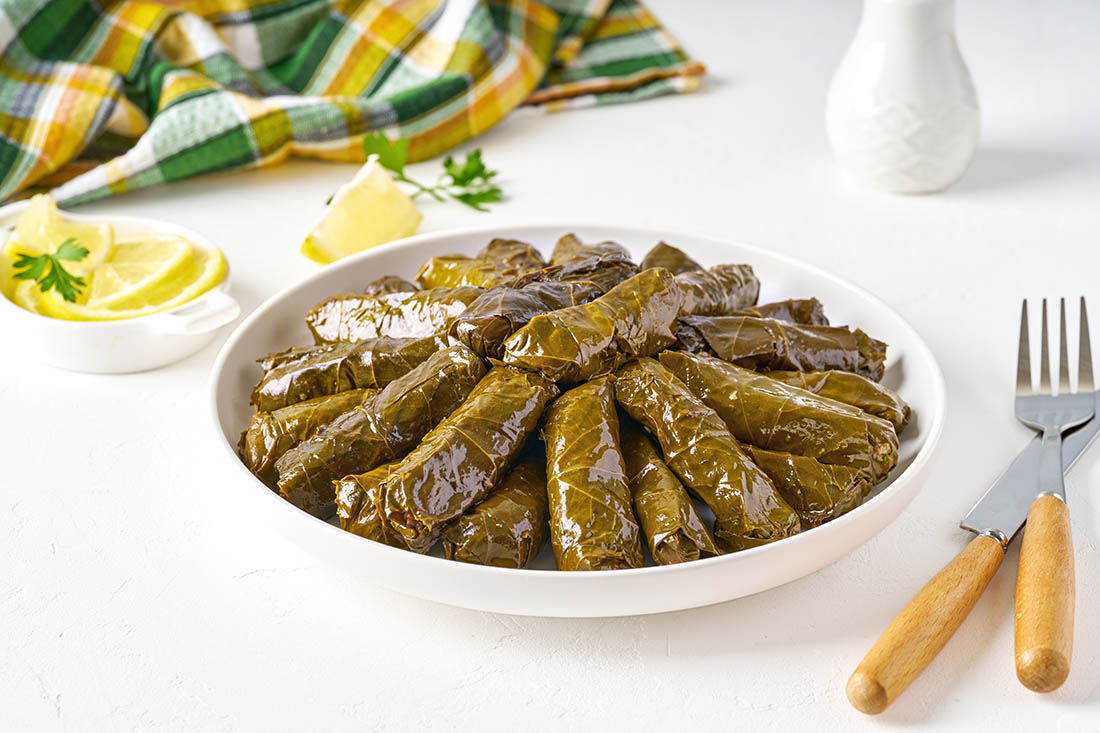

 Share on Facebook
Share on Facebook Share on X
Share on X Share by Email
Share by Email Share on Google Classroom
Share on Google Classroom
